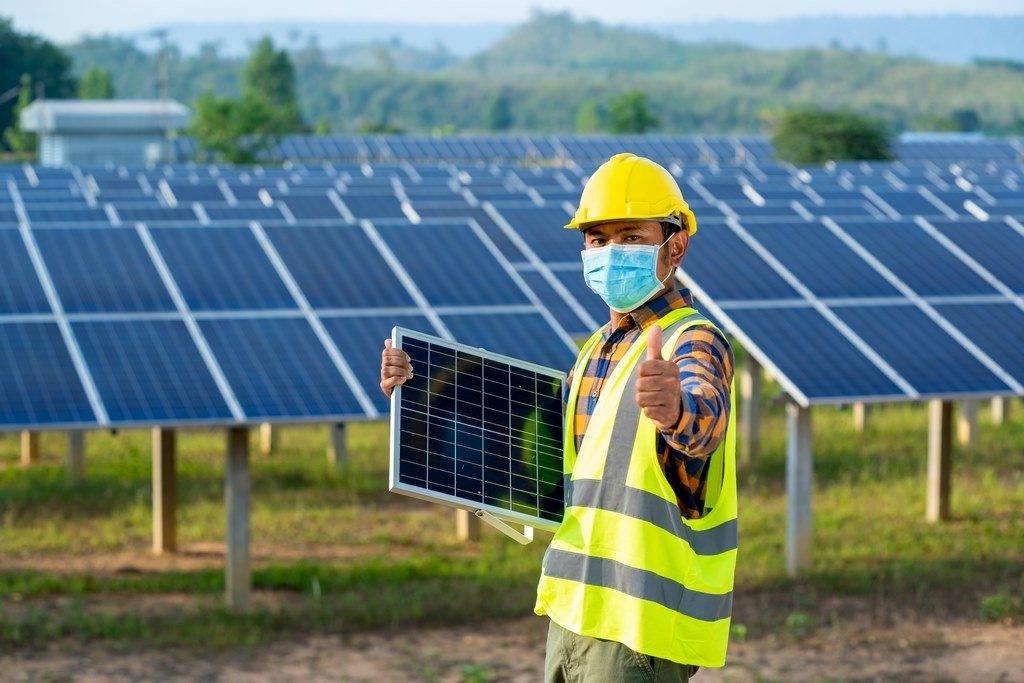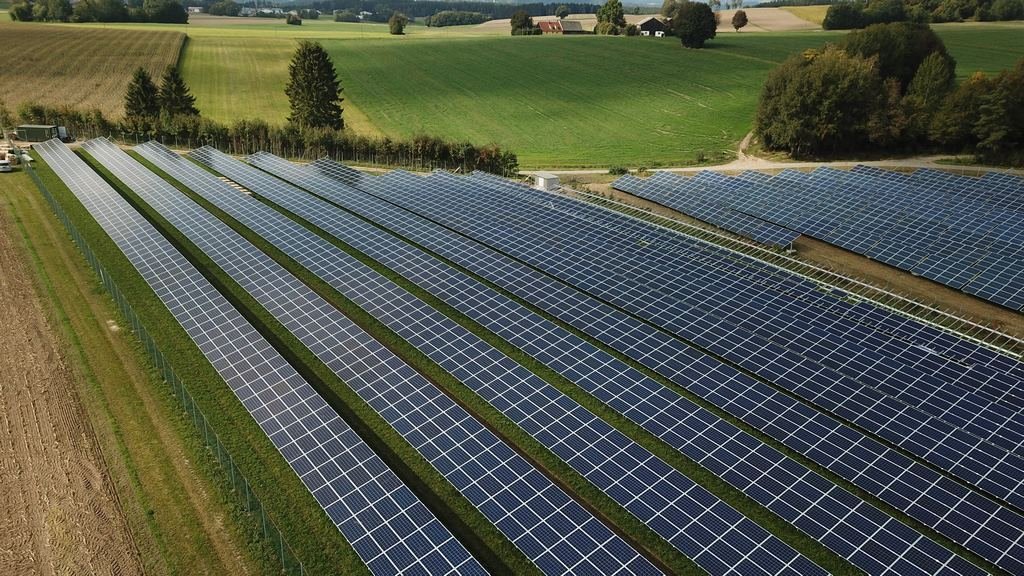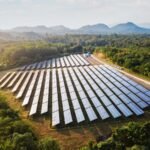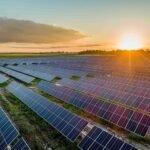EPCF. As the world accelerates its transition to clean energy, one model has emerged as a game-changer for solar development. This hybrid approach, combining engineering, procurement, construction, and financing, is reshaping how solar projects are delivered, especially in emerging markets where access to capital and reliable infrastructure can be limited.
EPCF Model Explained: Transforming Solar Energy Projects in Emerging Markets
At Steelbridge Export , we’ve seen firsthand how the EPCF model bridges gaps, unlocks investment, and brings solar power to regions once considered too risky or complex for large-scale renewable energy deployment.
In this article, we’ll explore how the EPCF model works, why it matters, and how it’s being used to deliver game-changing solar panel projects across Africa, Southeast Asia, Latin America, and beyond.
What is EPCF? Breaking Down the Acronym
EPCF stands for Engineering, Procurement, Construction, and Financing. Let’s break that down:
Engineering: This covers the design and technical planning of the solar energy system, including electrical systems, site analysis, and layout optimization.
Procurement: The sourcing of key materials and technologies, such as solar panels, inverters, mounting structures, and cabling.
Construction: The physical development of the solar plant—from groundwork and panel installation to grid connection and commissioning.
Financing: The critical fourth piece. Unlike traditional EPC models, EPCF providers also arrange the capital needed to fund the project—either through direct investment, loans, or structured financing with global partners.
This all-in-one approach makes EPCF ideal for emerging markets, where fragmented financing and execution have long delayed the adoption of renewable technologies.
Why EPCF Is a Game-Changer in Emerging Markets
1. Solving the Financing Gap
Many governments and private developers in developing nations have access to land, labor, and sunlight—but not necessarily capital. The EPCF model addresses this challenge head-on by bundling financial solutions into the project delivery process.
EPCF providers typically work with export credit agencies (ECAs), development banks, and international lenders to secure financing tailored to the project’s size, risk profile, and return on investment. This reduces the burden on local developers, accelerates project timelines, and attracts foreign investment.
2. Streamlined Project Delivery
When you have one partner handling engineering, procurement, construction, and financing, it simplifies communication and accountability. No more juggling multiple contractors, financiers, or vendors. The EPCF model streamlines the entire process and minimizes delays caused by misaligned schedules or budget issues.
This is particularly useful for large-scale solar panel farms or utility projects in regions with limited local infrastructure or bureaucratic hurdles. It creates a single chain of responsibility from design to delivery.
3. Risk Mitigation for Governments and Investors
Solar projects in emerging markets can carry higher political, financial, or logistical risks. EPCF contracts help mitigate these risks by assigning full project responsibility to the EPCF provider. With performance guarantees, fixed timelines, and integrated financing, investors have greater confidence in project execution.
Governments, too, benefit from predictable timelines and budget clarity, which is often lacking in traditional multi-party arrangements.
related articles: How EPCF Reduces Risk and Accelerates ROI in Energy Projects
How EPCF Powers Solar Panel Deployment at Scale
Procurement Made Easier
With EPCF, procurement is optimized not only for quality and price but also for financing eligibility. EPCF firms typically partner with tier-1 manufacturers of solar panels, inverters, and structural systems. This ensures that materials meet the standards required by lenders or export credit agencies.
By bundling procurement into financing, these firms can often access bulk pricing or preferential trade terms—benefits that are passed down to the project owner.
Access to Tier-1 Technology
One of the top concerns in emerging markets is access to high-efficiency solar technologies. EPCF providers often bring strategic partnerships with global technology leaders, ensuring that solar farms aren’t built with outdated or second-tier materials.
This leads to higher energy yield, longer system life, and ultimately, a better return on investment. Whether you’re building a 10 MW mini-grid or a 200 MW utility-scale plant, solar panels supplied under EPCF contracts typically meet global efficiency standards.
Case Study: Unlocking Solar Power in Sub-Saharan Africa
Let’s put this into context with a real-world scenario.
A government in Sub-Saharan Africa aimed to develop a 100 MW solar plant to reduce grid dependency on diesel and hydro. Despite land availability and political support, they struggled for years to find financing partners and coordinate contractors.
Enter the EPCF model.
A global EPCF provider was brought on board, offering a complete solution:
Engineering: Designed a scalable plant with local grid optimization.
Procurement: Sourced 300,000+ high-efficiency solar panels from top manufacturers.
Construction: Hired and trained over 400 local workers.
Financing: Secured a blended finance package from a European ECA and regional bank.
The result? The entire project was commissioned within 18 months, with a guaranteed performance warranty and a 20-year operations agreement.
That’s the power of EPCF in action.
Challenges to Consider with EPCF Models
While EPCF has undeniable advantages, it’s not without challenges:
– Complex Contracting
EPCF agreements can be legally and financially complex. Governments or developers need to ensure they have the right legal teams and financial advisors in place to navigate terms and conditions.
– Limited Flexibility
When everything is bundled into one provider, there’s less flexibility in choosing vendors or financing terms. That’s why selecting a trustworthy and experienced EPCF partner is critical.
– Regulatory Approvals
In some emerging markets, local regulations around foreign financing, land use, or energy sales can complicate EPCF delivery. A strong local legal framework and government support are key to successful implementation.
What Makes a Great EPCF Partner?
To succeed with EPCF in solar projects, you need a partner that brings more than just capital. Here’s what to look for:
Proven Track Record in similar markets and project sizes
Strong Supply Chain Access to high-efficiency solar panels and technology
Flexible Financing Solutions tailored to your country or region
Local Integration with contractors, workforce training, and grid compliance
Clear Performance Guarantees on timelines, power output, and maintenance
At Steelbridge Export, we pride ourselves on advising governments and private developers on how to structure EPCF deals that maximize project outcomes. With the right structure, EPCF can remove most of the friction that traditionally slows renewable deployment.
The Future of Solar in Emerging Markets is EPCF-Driven
Emerging markets represent the next frontier for global renewable energy growth. According to the International Energy Agency (IEA), over 80% of new energy demand over the next two decades will come from Africa, Asia, and Latin America.
But demand alone isn’t enough. We need scalable, efficient, and financially viable models to meet that demand—and EPCF is delivering exactly that.
It’s unlocking finance, streamlining construction, and delivering reliable energy to regions long underserved by traditional grids. And as solar technology continues to become cheaper and more efficient, EPCF contracts will play an even greater role in deploying next-gen solar systems where they’re needed most.
Whether you’re a government leader, private investor, or clean energy developer, EPCF gives you a roadmap to move from planning to power—quickly, efficiently, and affordably.
And for those seeking trusted partners in solar development, firms like Trina Solar are leading the charge with integrated EPCF offerings that deliver performance, reliability, and real impact.
Frequently Asked Questions (FAQs) about EPCF in Solar Projects
- 1. What does EPCF stand for?
EPCF stands for Engineering, Procurement, Construction, and Financing—an integrated project delivery and funding model. - 2. How does EPCF differ from traditional EPC models?
Unlike EPC, EPCF includes financing, providing a turnkey solution that covers capital arrangement alongside design and construction. - 3. Why is EPCF particularly suitable for emerging markets?
EPCF addresses financing gaps, reduces project complexity, mitigates risks, and streamlines delivery in regions with limited infrastructure and capital access. - 4. How does EPCF reduce project risks?
By assigning full accountability to one provider and securing financing upfront, EPCF minimizes delays, cost overruns, and coordination failures. - 5. What types of financing sources are typically involved in EPCF projects?
EPCF financing often involves export credit agencies (ECAs), development banks, international lenders, and blended finance mechanisms.











7 Comments
[…] EPCF Model Explained: Transforming Solar Energy Projects in Emerging Markets […]
[…] read more: EPCF Model Explained: Transforming Solar Energy Projects in Emerging Markets […]
[…] EPCF Model Explained: Transforming Solar Energy Projects in Emerging Markets […]
[…] EPCF Model Explained: Transforming Solar Energy Projects in Emerging Markets […]
[…] EPCF Model Explained: Transforming Solar Energy Projects in Emerging Markets […]
[…] EPCF Model Explained: Transforming Solar Energy Projects in Emerging Markets […]
[…] EPCF Model Explained: Transforming Solar Energy Projects in Emerging Markets […]